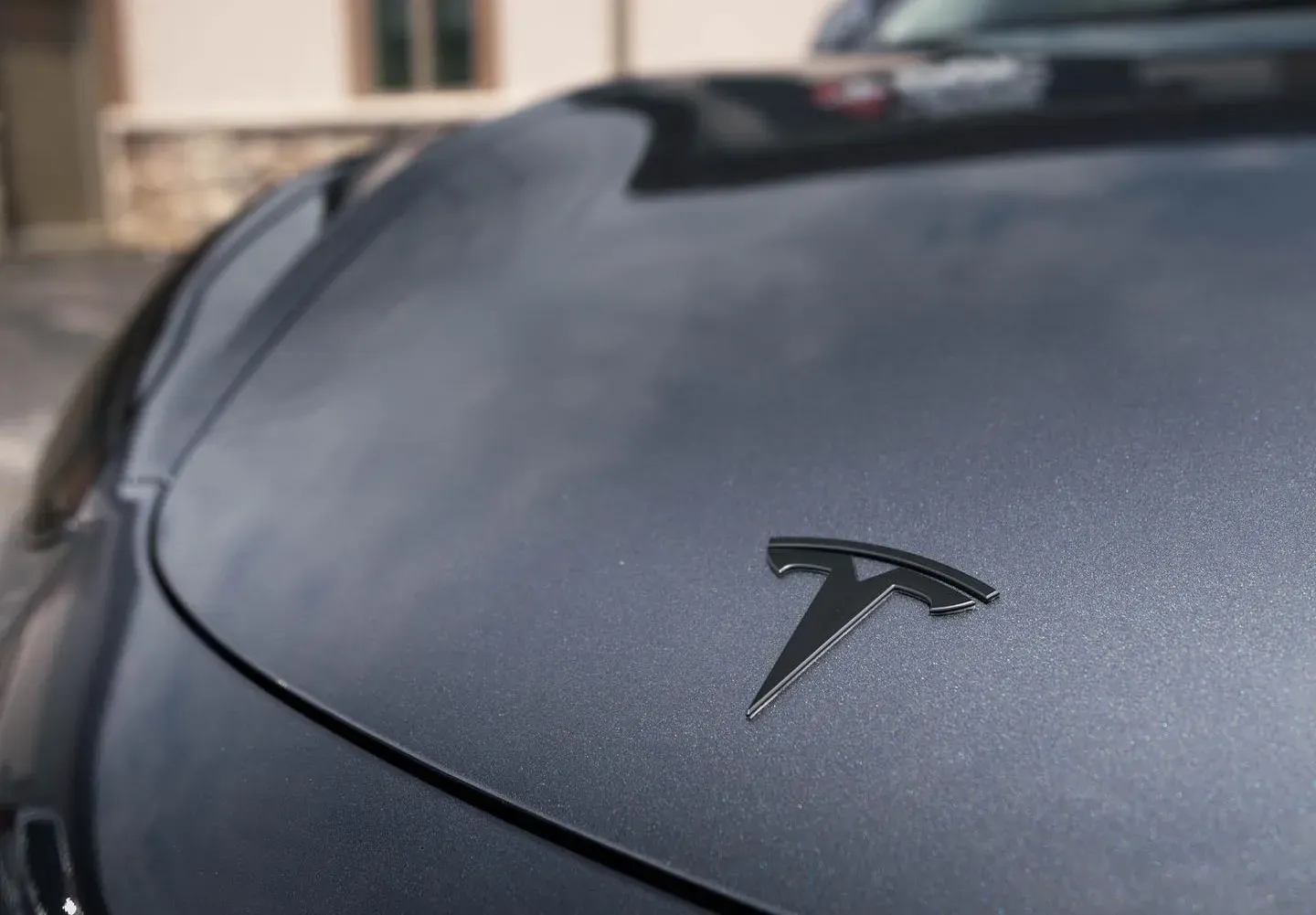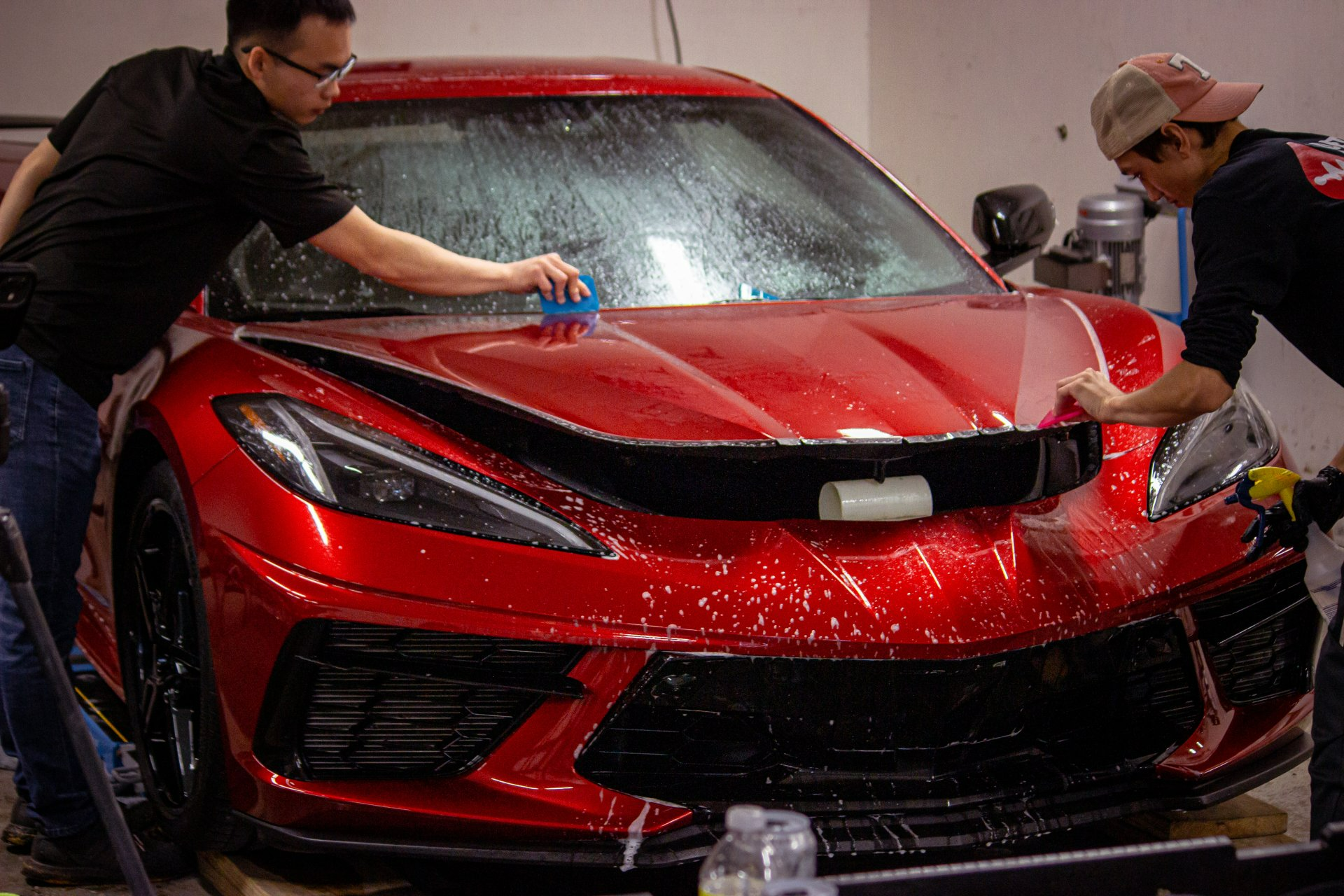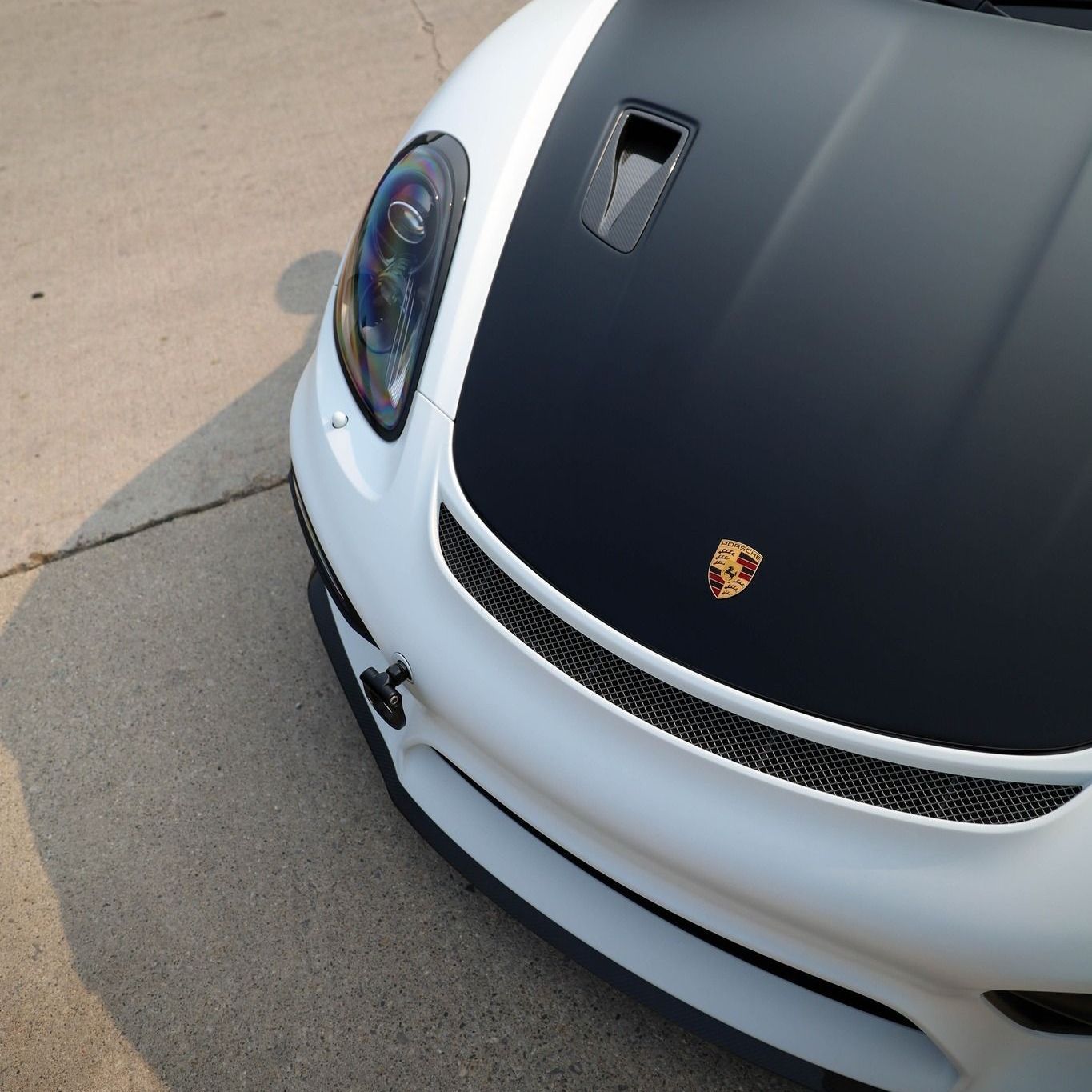The Detail Doc Blog
Should You Detail Your Tesla Before Applying PPF?
(989) 244-0505 GET SCHEDULED NOWWhen it comes to preserving the sleek design and paint of your Tesla, many owners often overlook one crucial step: detailing before applying Paint Protection Film (PPF). You might wonder why this matters—can’t the film just go on over whatever surface is there? Well, think of it like laying a fresh coat of paint on a wall that hasn't been prepped. Any bumps or imperfections beneath can show through, and you'll end up regretting it later. Proper detailing ensures a smooth foundation that not only makes the PPF stick better but also enhances the car's overall look. With some basic effort and cleaning, you can ensure that your investment in both your Tesla and the PPF pays off handsomely in the long run. Let's dive deeper into why this first step is essential for achieving the best results!
Yes, it is highly recommended to
detail your Tesla before applying PPF to ensure the best results; this includes thoroughly cleaning and inspecting the paint for any imperfections, such as scratches or swirls that could affect both the appearance and performance of the film. A proper detailing process, including washing, clay bar treatment, and possibly paint correction, will provide a smooth surface that enhances the adhesion and longevity of the PPF.
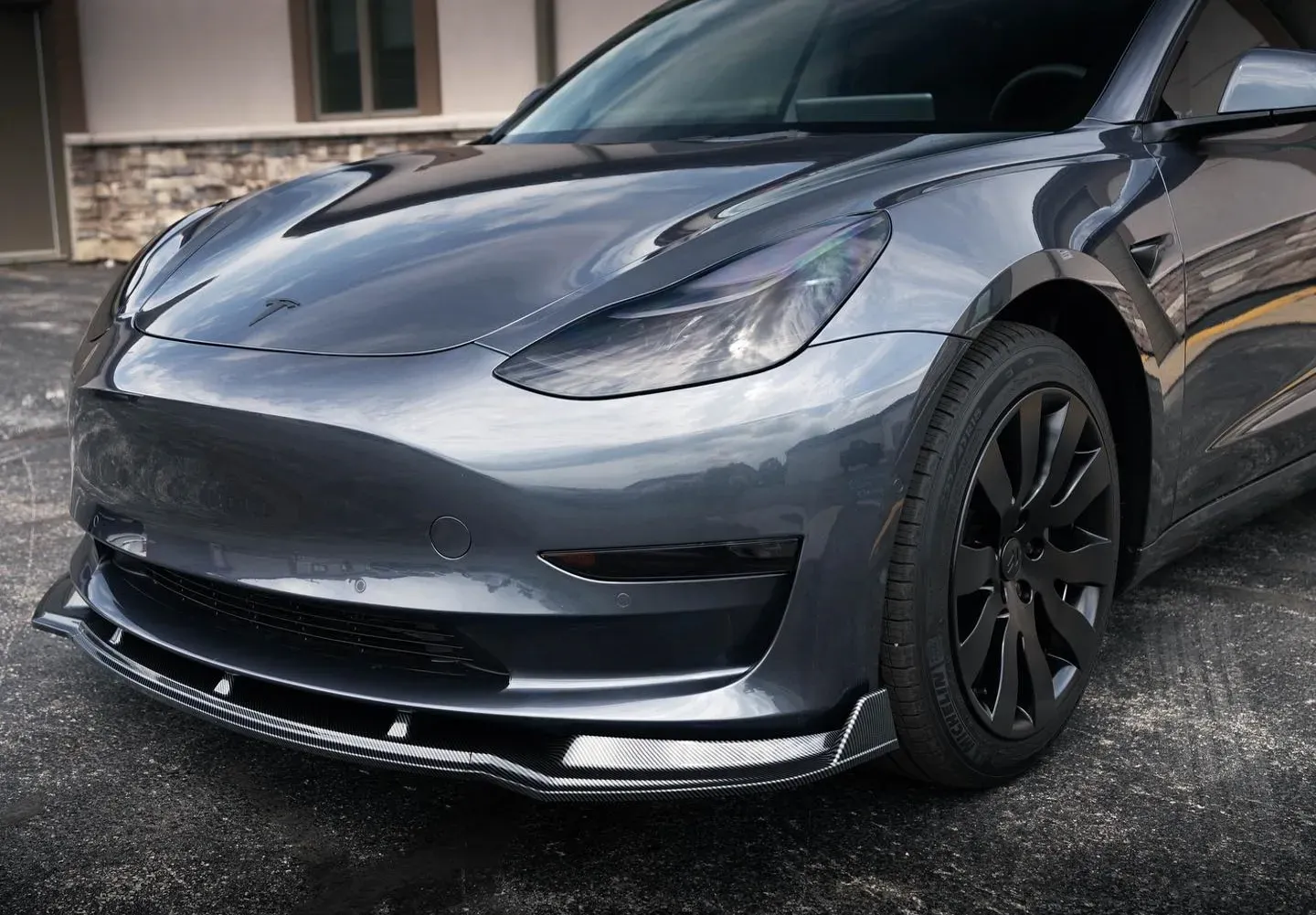
Why Detail Before Applying PPF?
The most significant reason to detail your Tesla before applying PPF is that it creates an ideal surface for adhesion. Just like you wouldn't apply wallpaper over a rough, unprepared wall, applying PPF over a surface that hasn't been properly cleaned and corrected can lead to disastrous effects. Contaminants like dirt, oil, or wax act as roadblocks in the bonding process, preventing the PPF from securing itself effectively to the paint, which compromises its protective qualities. Studies have shown that a clean surface can improve PPF longevity by up to 50%. Removing those tiny particles before application is not just a good idea; it's critical.
The cleaning process entails several meticulous steps. First, a thorough wash removes visible grime. Following this, using a clay bar treatment is crucial because it lifts off any remaining contaminants clinging tightly to the paint surface. The ultimate goal here is to ensure that when the PPF is applied, it sits perfectly flat without any underlying blemishes that would disrupt its smoothness. This detailed preparation not only protects your vehicle but also enhances its appearance and value.
Next up is the aesthetic benefit of detailing, which cannot be overstated.
Creates Ideal Surface
Beyond just ensuring effective adhesion, detailing significantly boosts visual appeal. Imagine putting on makeup—underneath it should be well-moisturized for the finish to look flawless. In automotive terms, pre-PPF detailing serves that purpose by removing imperfections such as scratches and swirls. These minor flaws become far less noticeable once they're treated and pave the way for an infinite canvas for the PPF.
Applying a ceramic coating right after installing PPF can further enhance your vehicle's look and durability! It seals the film while providing an additional layer of protection against environmental contaminants. Several Tesla owners expressed how this combination improved visual aesthetics considerably—many reported their vehicles looked even better than new.
Detailing provides immediate benefits; it also lays a foundation for long-term maintenance ease. Choosing to detail before installing PPF ultimately creates an extraordinary relationship between high-performance protection and stunning aesthetics—two pieces of a puzzle that come together beautifully when prepared correctly.
Understanding the critical steps involved in preparing your vehicle ensures you're set up for success with your protective films moving forward.
Essential Steps for Pre-PPF Detailing
Achieving a stunning finish with paint protection film (PPF) begins with meticulous processes designed to prepare your vehicle's surface. The first crucial step is Comprehensive Washing. Start by thoroughly washing your car to eliminate any surface dirt and contaminants that might affect the application. Opt for a high-quality, pH-neutral car shampoo—this will help maintain any existing wax and not strip away protective coatings. Avoid using dish soap; while effective at cleaning countertops, it can damage your car’s finish.
Now that you've banished basic grime, it's time for a deep cleaning session.
Step I - Comprehensive Washing
To effectively wash the exterior, use a microfiber wash mitt and work in sections to prevent re-depositing dirt on the surface. Rinse the mitt frequently in clean water and dry the car with soft microfiber towels to prevent scratching. Ensuring that no dirt remains will set you up for success when you move on to the next cleaning process.
After achieving a clean slate, we can take our detailing efforts even further with clay bar treatment.
Step II - Clay Bar Treatment
The next critical step is utilizing a clay bar treatment. This isn’t just about having shiny paint; it ensures that microscopic particles are removed from your vehicle’s surface so they don’t get trapped under the PPF. By gently rubbing the clay bar over the paint, you’ll remove embedded contaminants such as tree sap, industrial fallout, or small particles of dirt that normal washing can miss. A medium-grade clay bar is usually ideal for standard paint surfaces. Keep everything lubricated during this process to avoid scratching.
With a smooth canvas now prepared, it's time to turn our focus inward for an inspection.
Step III - Inspect and Correct
Once your vehicle has been treated with clay, inspect the exterior for scratches, swirls, or blemishes under good lighting. This part of detailing is crucial because any imperfections left behind will affect how the PPF adheres and may lead to premature wear or aesthetic issues later on. If you find any flaws, using a one-step polish comes in handy. A dual-action polisher fitted with foam pads will help correct these issues effectively, restoring your paintwork’s radiance before PPF installation.
Lastly, after polishing surfaces until they gleam like new, it's essential to prepare for adhesion.
Step IV - Apply Surface Prep Solution
To wrap up this pre-PPF detailing process, apply a surface preparation solution. A 50% solution of isopropyl alcohol and water works wonders here. Spray the entire vehicle and wipe it down using another clean microfiber cloth. This final step eliminates any residual oils from your previous efforts and ensures optimal adhesion for the PPF. Make sure every inch has been treated; after all your hard work, having a flawless bond is worth it!
Following these steps in pre-PPF detailing not only ensures that your Tesla looks immaculate but also sets the stage for enhanced protection without compromising aesthetic quality or durability.
Understanding these essential procedures leads us closer to appreciating how meticulous detailing contributes to superior performance in protective applications.
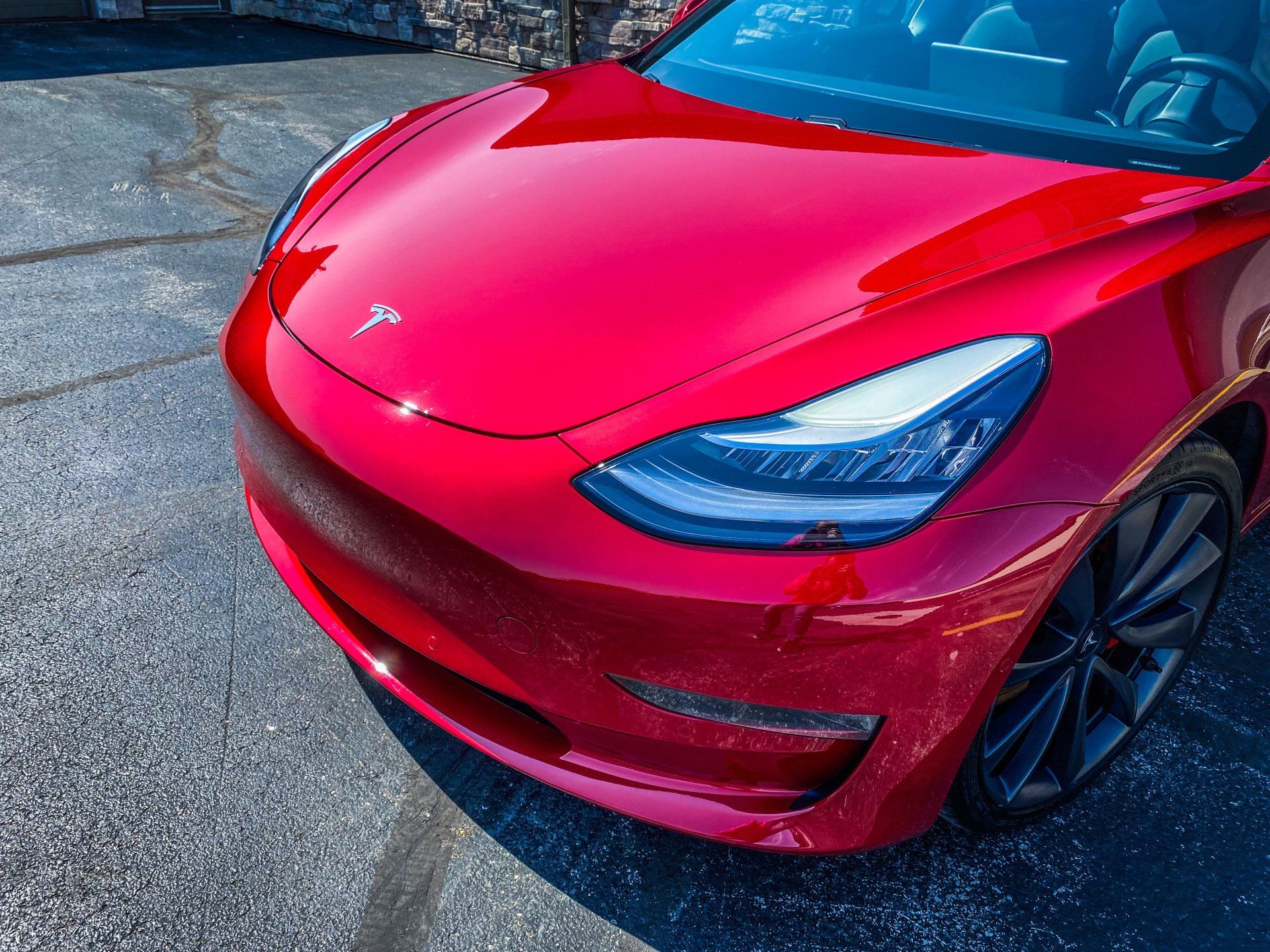
Benefits of Detailing for PPF Applications
Detailing before PPF application offers multiple advantages, ranging from performance to appearance, that can extend the life and effectiveness of your vehicle’s protective layer.
Longer Durability
A well-prepared surface plays a crucial role in ensuring that the PPF adheres effectively. When contaminants such as dirt, wax, or oils are removed through thorough cleaning, it allows for a tighter bond between the film and the paint beneath. This enhanced bond means that your PPF won't just stay in place more effectively; it will also resist tearing and lifting. As a result, vehicles that have been properly detailed can enjoy substantially longer durability from their PPF. What could be better than fewer replacements and less frequent maintenance amidst everyday wear and tear?
Industry studies suggest that a clean surface can improve the longevity of PPF by up to 50%. Just think about that! Investing a bit in detailing upfront can lead to significant savings later.
Enhanced Look
For those who appreciate aesthetics, the appearance of their vehicle matters just as much as its protection. If you've invested in high-quality PPF, you want it to look impeccable too. Detailing removes imperfections such as scratches or blemishes on your car's surface. This ensures that when the film is applied, it sits over a smooth, glossy canvas, resulting in a near-perfect finish. The gleam you see on a freshly detailed car not only showcases the original color but also elevates its appeal significantly.
Before and After Inspection
Imagine pulling up to a gathering with friends and being the talk of the town simply because your car looks pristine! That's what a proper detailing session does—it transforms your vehicle's appearance and gives you pride every time you see it.
Ongoing Maintenance Tips
After applying paint protection film (PPF) on your Tesla, it’s essential to develop a routine maintenance plan that preserves both the film itself and the paint beneath it.
Start by washing your vehicle every two weeks. It's crucial to use a pH-balanced car shampoo specifically formulated for PPF. These gentle cleansers effectively remove dirt and grime without compromising the integrity of the film.
When washing, always opt for a hand wash or a touchless wash rather than high-pressure washes, as they can lift the edges of the PPF, leading to potential peeling.
Our vehicles represent significant investments, and caring for them should be treated with the importance they deserve. Adopting a proactive maintenance routine not only saves time in the long run but also drastically reduces costs associated with repairs.
Moving beyond regular washing, avoid harsh chemicals and abrasive cleaners that could jeopardize your PPF's durability. Instead, choose dedicated cleaning products that are explicitly labeled as safe for use on paint protection films.
Avoid using common household cleaners like bleach or any acidic solutions, as these can cause fading or degrade the film over time. Your vehicle's appearance relies heavily on what you put on it, so play it safe.
Annual Inspections
Each year, I highly recommend scheduling an inspection with a professional detailer who understands PPF thoroughly. This isn't merely an added expense—it's an investment in the longevity of your vehicle's finish.
During these inspections, the detailer can assess the film for signs of wear, peeling edges, or air pockets. They can perform minor repairs or re-seal edges where necessary. Such preventive measures will prolong the lifespan of your PPF while ensuring that its protective qualities remain intact.
As a quick reminder, consistency is key. Inspect your PPF yourself at regular intervals—say every three months—to check for any signs of distress or damage caused by road debris or environmental factors. Addressing these issues promptly can save you from more extensive repairs later.
Following these ongoing maintenance steps will keep your Tesla looking pristine, but don't forget to lean on professionals for personalized advice and support along the way. Staying informed means you're fully equipped to protect your investment wisely.
To ensure your Tesla remains in top condition and to discuss paint protection film options, call us at (989) 244-0505 or visit
The Detail Doc.


